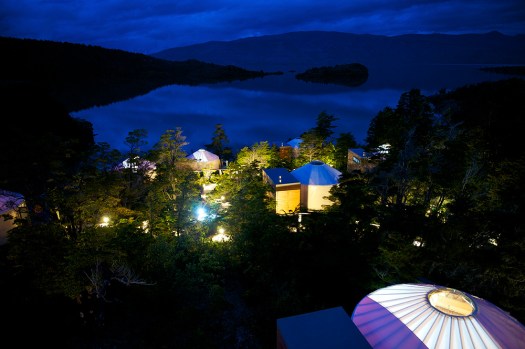Arriving to Eolo in Patagonia’s La Anita valley is unlike any other hotel approach experience out there. Surrounded with nothing but windswept pampas and the peaks of the region’s iconic mountains as far as the eye can see, it’s hard to imagine that a luxurious property even exists round these parts. Surprising guests is part of what makes Eolo so alluring.
After driving around, seeing nothing but the natural glory of Argentine Patagonia, Eolo appears as if out of nowhere, this low-lying lodge modeled after a classic sheep farm, an unexpected refuge in a desolate yet beautiful locale.
Located 30 kilometers west of El Calafate, the touristy nucleus of this pocket of Patagonia where there are meaty restaurants and shops for souvenirs or whatever you may have forgotten to pack for the trip, Eolo really does act like a tucked away retreat. Set on a private 4,000-hectare estate with virtually no visible neighbor, you can’t dream up more reclusive accommodations in a region known for providing travelers with space, especially in the luxury market. And with only 17 private suites, things don’t ever get crowded at this property.
Once you get inside, it’s all about subtle design touches, giving Eolo the warm intimacy of a private home. Worn-but-refined leather furniture, complementary antiques, carved wood, crisp linen, patterned area rugs and plush animal hide combine to create an atmosphere that honors the destination in a luxurious and relaxing way. There’s never too much to look but everything works together to deliver one design narrative: that there’s harmony between what’s inside and out.
Private rooms are spacious and chic with beds facing floor-to-ceiling windows. (And the corner rooms get two!) There’s no hiding of Patagonia here. Same in the bathrooms, which are simple and rustic-looking. The showers come equipped with eye-level windows so there’s really no getting away from glorious views of the outdoors. And depending on which room you have, you could be peeking at Lago Argentino, La Anita valley, the Torres del Paine or the Rico branch.
This is a Relais & Chateaux property so you know that food is going to be exceptional. Breakfast is a wonderful start to the day with a ton of sun usually flooding the dining room as you while away on fresh juices and flakey pastries.
Your day will likely be spent on a excursion so Eolo can prepare a gourmet picnic lunch, which you’ve selected the day before, ticking little boxes to say you want sun-dried tomatoes in your sandwich and a brownie for dessert. You may not be at the hotel when you enjoy these treats, but the meticulously prepared boxes is one of the best examples of how exceptional the service is at Eolo. You feel like you’re being taken care of, even when you’re miles away from the staff.
Dinner service is when Eolo’s full culinary prowess is unleashed when a menu of locally sourced deliciousness will be on offer. Each course provides a handful of choices – if you’re staying a few days you can sample them all – that will satisfy even picky eaters among us.
A starter could be grilled local vegetables or soup while Patagonian lamb is usually among the options for a main course; but you are in Argentina, perhaps a perfectly seasoned cut of steak is the unbeatable choice. And don’t forget the wine. Eolo boasts a selection of vintages sourced from all over the great wine-making regions of the country.




















